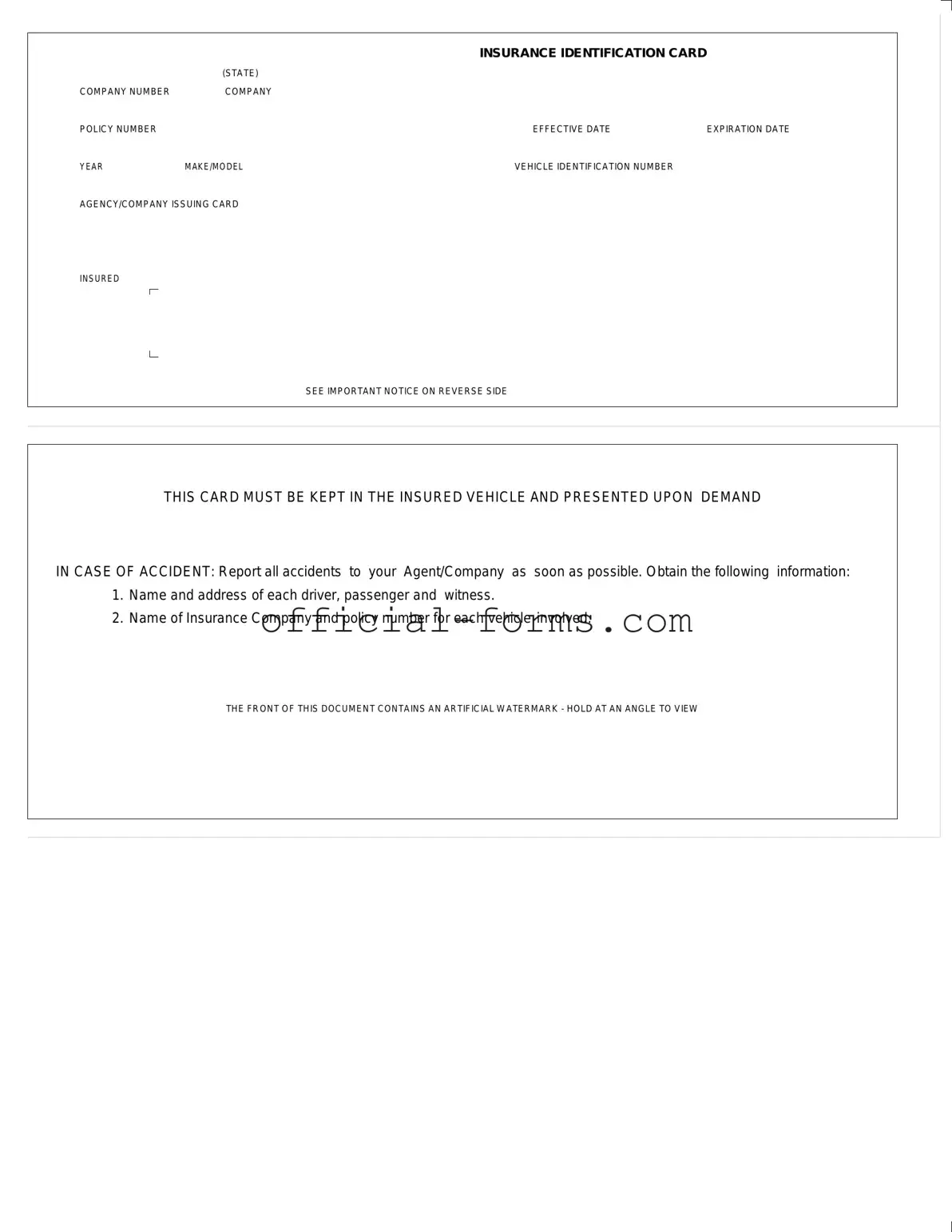When you hit the road, having your auto insurance card on hand is essential. This small but crucial document provides vital information about your insurance coverage and serves as proof of your policy. The auto insurance card typically includes key details such as the insurance company name, policy number, and effective and expiration dates. You'll also find the year, make, and model of your vehicle, along with the Vehicle Identification Number (VIN), which uniquely identifies your car. It's important to note that this card must be kept in your vehicle at all times and presented upon request in the event of an accident. Should an accident occur, you must report it to your insurance agent or company immediately and gather necessary information from all parties involved, including names, addresses, and insurance details. Additionally, pay attention to the important notice on the reverse side of the card, as it may contain further instructions. Lastly, the front of the document features an artificial watermark, which can be seen by holding it at an angle, adding a layer of security to your card.
